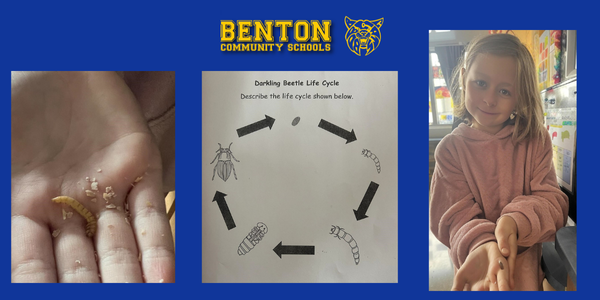In our 2nd grade classroom, science has been extra exciting this month! We are using our FOSS Science Kit to study plants and animals, and students have been working like real scientists—asking questions, observing closely, and recording their discoveries. The highlight of our unit has been learning about mealworms. These small creatures may not look very special at first, but they go through an incredible life cycle that students have been able to witness step by step.
Students began their investigation by carefully observing mealworms in small containers. Using magnifiers, they noticed how the mealworms move, what they eat, and how they respond to their environment. Some students spotted tiny details, such as the way a mealworm wiggles its body to crawl, or how it burrows under the bedding to hide. These careful observations are helping students understand that all living things share common needs like food, water, air, and shelter.
As part of this unit, students are exploring the life cycle of a mealworm. It begins with an egg, so tiny it is almost invisible. The egg hatches into the larva—this is the stage we call a mealworm. Over time, the larva grows and sheds its skin several times before becoming a pupa. Although the pupa seems still on the outside, important changes are happening inside. The final stage is the adult darkling beetle, which can then lay eggs and start the cycle all over again.
Watching these changes up close has been both surprising and fascinating for our 2nd graders. This hands-on experience has sparked their curiosity and reminded us all of the amazing ways living things grow and change.

